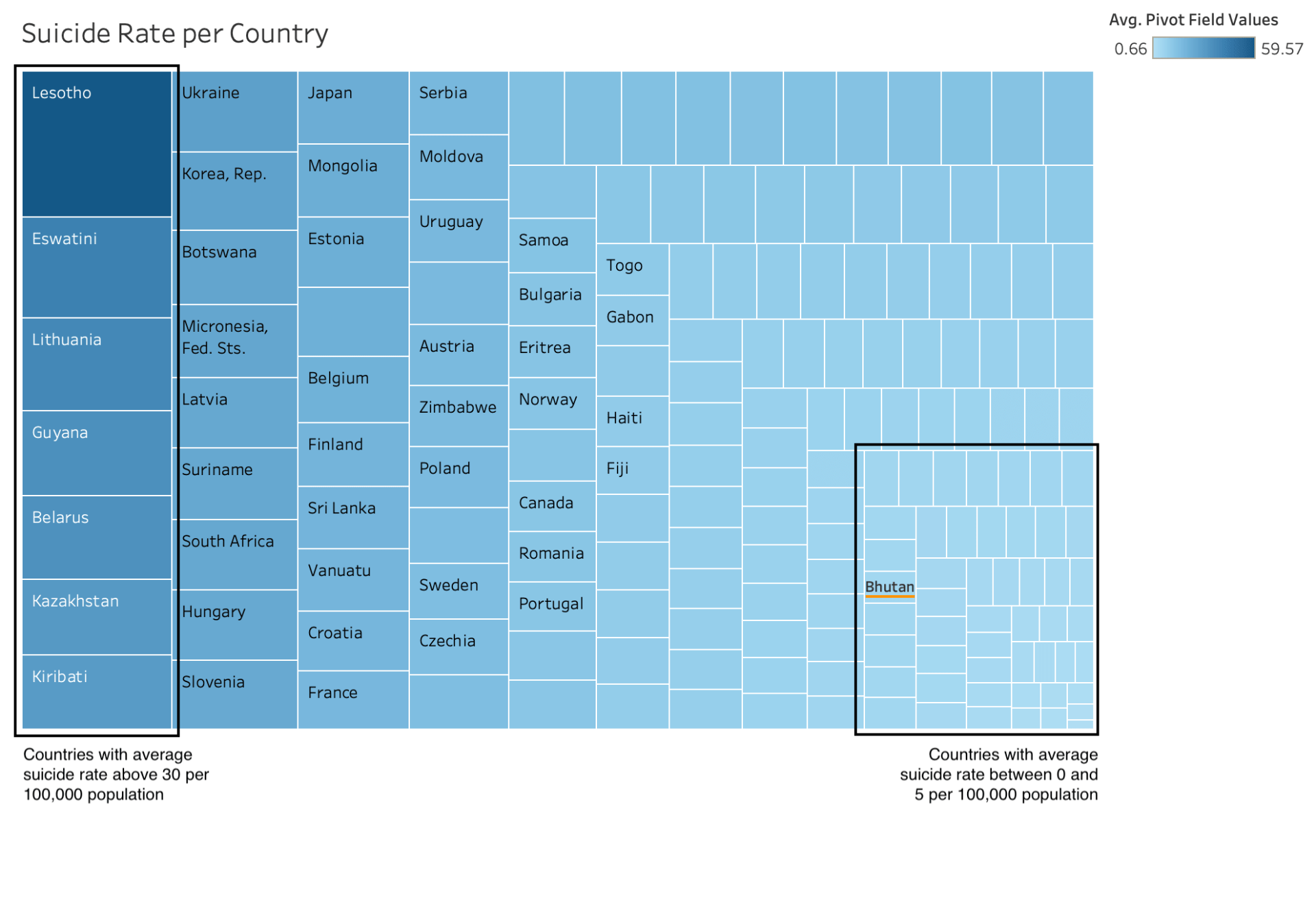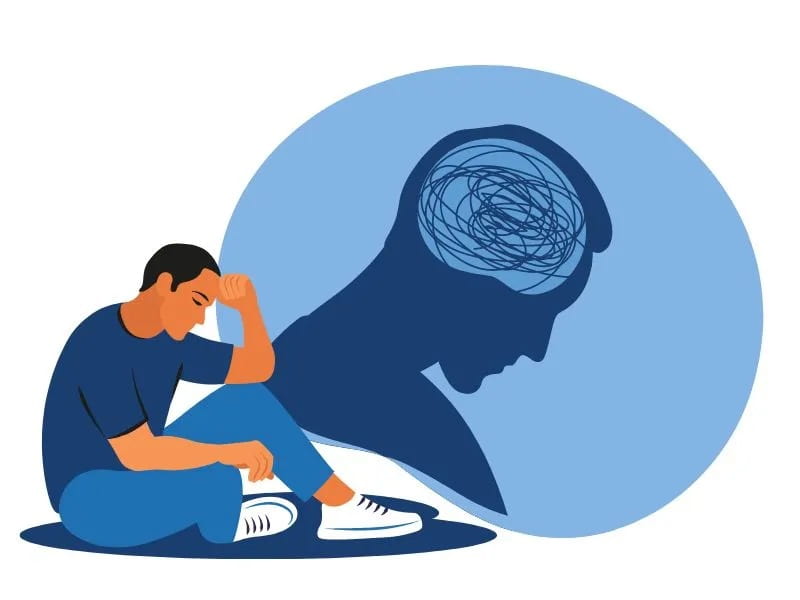
by ars23 | Nov 20, 2023 | Uncategorized
What is your value?
Although you would like to say you cannot be measured by a number, you are! Studies implemented to assess projects and decide whether to implement them or not reduce you to a number, just like they judge the value of a building.
The world is heading in a clear direction: focus on development! Although, it seems like a great thing, easing our lives, take a minute to explore its impact:
We can notice how the more developed countries have, in general, higher suicide rates each year, especially more recently. To demonstrate this further, we take a look at the following visualization comparing average suicide mortality rate (per 100,000 population) per given years across the main regions we are considering:
What is the point?
The point is that we should put more emphasis on our well-being and our connection with the world instead of only focusing on materialistic development. Whenever we take action on something, we must evaluate the impact, and in the case of development, the signs are not good.
However, it is not too late to make a change. Bhutan, the happiest country in the world, prioritizes the mental well-being of its citizens. It is the only country that uses the gross national happiness indicator (GNH) just like other countries focus on the gross national income.
The following visualization shows the average suicide rate per country instead of region:

Notice how Bhutan falls in the range of countries that average from 0 to 5 suicide per 100,000 population compared to other countries that average more than 30 in the range of given years (2000-2019).
We recommend people to prioritize their well-being and mental health, but most importantly, governments to realize that economic and materialistic development is not yielding that wanted outcome. To prioritize humanity, governments ought to start taking GNH into consideration with every decision they are making.
Let us choose humanity!

by tgc05 | Nov 19, 2023 | Uncategorized
The sustainable development goals set by the United Nations outline the global targets to be achieved by 2030. Among these, SDG 3 focuses on ensuring health and well-being for all, and more specifically SDG3.4 targets the mental health well-being.
We can see in the graph that males suicide rate is much more higher, approximately three to four times, than females suicide rate, no matter if the country is developed or not. And this applies to approximately all countries if not all.
But what is the main cause? the root cause underlying behind this? MASCUNALITY.
Social expectations weigh heavily on men, discouraging them from expressing vulnerability and seeking for help, creating a silent struggle, and isolating them in their battles with mental health.
The call to action is clear:
- Challenge stereotypes around mascunality by promoting for a more inclusive and open understanding of mascunality and challenging the social norms that prevent men from showing signs and expressing weekness.
- Promote mental health education by encouraging mental health programs and addressing the struggles men face.
- Finally, let men have access to mental health services.
Finally, we need to keep track of the rates. For sure if the plan is going to be in action, these rates will go down.

by cwk05 | Nov 19, 2023 | Uncategorized
In a world teeming with progress, one persistent challenge darkens our collective horizon – the rising specter of suicide. Behind the cold statistics lie countless untold stories of despair, each one a testament to the urgent need for a compassionate and effective response. Let us delve into the stark realities that underscore the gravity of this issue.
The global landscape of suicide mortality rates is a sobering tableau. Over the years, the data reveals a consistent gender disparity, with male suicide rates consistently surpassing those of females. Between 2000 and 2019, the male suicide rate remained at an alarming average of 16.075%, overshadowing the female rate. While there has been a slight decrease in the overall rate, from 11.63% in 2000 to 9.33% in 2019, the persistence of high numbers and occasional spikes, like the one in 2013, signals an urgent need for intervention.
Economic disparities exacerbate the issue, as revealed by the Gender Distribution of Suicide Mortality Rates by Income Class. Notably, those with low income levels exhibit lower suicide rates (9.71% for males and 4% for females), hinting at a potential link between financial struggle and mental health. Paradoxically, the highest suicide rate is observed among high-income males, reaching a staggering 21.23%. The reasons behind this economic divergence merit careful consideration.
Zooming in on a country-by-country perspective, certain nations emerge as outliers, bearing the weight of exceptionally high suicide rates. Lesotho, Eswatini, the Russian Federation, Guyana, Kazakhstan, Kiribati, Ukraine, South Korea, Botswana, Latvia, and Hungary are among the nations grappling with disproportionately high suicide rates. Identifying patterns within these outliers offers crucial insights into potential factors contributing to the crisis.
We should collaborate on comprehensive mental health education programs to destigmatize mental health issues and foster a culture of open communication. Developing targeted support systems for individuals facing economic challenges will address the intricate relationship between financial struggles and mental health. Strengthening community support systems to identify and aid individuals at risk ensures that no one is left to battle their demons alone.
Comprehensive Strategies for Mental Health Advocacy against Suicide could be the following:
- Collaborate with educational institutions to integrate mental health education into curricula, focusing on destigmatization, early detection, and coping mechanisms.
- Implement awareness campaigns to reach a broader audience and enhance understanding of mental health issues.
- Establish programs offering financial counseling, employment assistance, and mental health resources tailored to different income groups.
- Foster partnerships with businesses to create inclusive work environments that prioritize employee well-being.
- Develop community-based mental health initiatives, including support groups, helplines, and outreach programs.
- Encourage local leaders to champion mental health awareness and facilitate resources at the grassroots level, strengthening community outreach efforts.
In conclusion, conducting pilot programs in select regions to assess the effectiveness of the proposed solutions is a necessary step. Moreover, utilizing quantitative and qualitative metrics, such as changes in suicide rates, public awareness, and community engagement, will help evaluate the impact of implementing these measures.
Findings/Recommendations:
Upon validation, refining and scaling successful programs for broader implementation is the next logical step. Advocating for policy changes that prioritize mental health and allocate resources to address the multifaceted challenges contributing to the global suicide crisis is crucial. Remember, breaking the chains requires a collective effort – a united front against the darkness that shrouds the lives of those grappling with the heavy burden of despair.

by Zahraa Berjawi | Nov 25, 2021 | Dashboard, Visualization
FROM “Man up, you can’t be depressed just because this happened!” TO “Why are you looking so sad and tired? Are you depressed? You can talk to me if you want..”
To begin with, according to the World Bank dataset on development indicators, it is clear that men’s average suicide mortality rate is significantly higher than females.

Surprisingly, males are three times more suicidal than females, reaching an average of 14.3 male suicides per 100,000 males, while 4.4 female suicides per 100,000 females.

But why is this the case?
 While comparing countries with high unemployment rates and countries with low unemployment rates, the following analyses were investigated:
While comparing countries with high unemployment rates and countries with low unemployment rates, the following analyses were investigated:
To begin with, in Countries with highest unemployment rates, the suicide mortality rates for both men and women are higher.
However, when faced with difficult economic situations:
- Females suicide mortality rates were higher by 150%
- Males suicide mortality rates were higher by 217%
This leads to the conclusion that men’s mental health tends to be more susceptible to financial burdens.
So, what should be done?
A potential solution would be providing unemployment benefits, which are governmental compensations that are provided for unemployed people. These compensations help secure a stable income after the layoff of an employee, and they improve unemployed people’s productivity in the labor market by improving job matching and connecting employees to employers.
In addition, this solution can be helpful in mitigating the impact of unemployment on the psychological wellbeing of people.
As the following illustration shows, both females’ and males’ suicide mortality rates are higher in countries with lower adequacy and coverage of unemployment benefits

More specifically, males’ suicide rates are 31% lower in countries with high adequacy and coverage of unemployment benefits.
Thus, in order to mitigate the males’ suicide mortality, several recommendations are suggested to be effective.
- First, it is highly recommended that suicide prevention groups intensify their focus on men and encourage them to express themselves and seek psychological help.
- Equally important, in countries with high unemployment rates, governments should work on providing unemployment benefits and ensure their wide coverage of the unemployed.
Thank you

by kmh25 | May 9, 2021 | Dashboard
The COVID-19 pandemic has caused a surge in student suicides.
The reasons are numerous ranging from:
1. The challenge of remote learning including its impact on grades
2. Students trying to socialize from their bedrooms instead of enjoying normal on-campus activities.
However, suicide among college students was always present even before the pandemic and it is imperative to mitigate its impact.
Schools and universities should:
-Spread suicide awareness and prevention campaign to eliminate its stigmatization.
-Launch counseling program that offers therapy for people in need.
-Consider modifying the educational system to reduce stress among students.







 While comparing countries with high unemployment rates and countries with low unemployment rates, the following analyses were investigated:
While comparing countries with high unemployment rates and countries with low unemployment rates, the following analyses were investigated:
